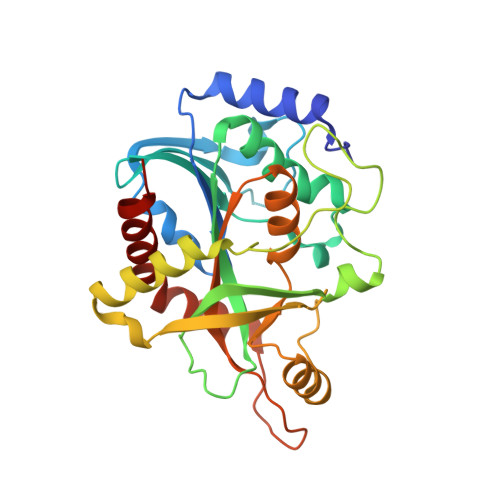Adenosine binding to low-molecular-weight purine nucleoside phosphorylase: the structural basis for recognition based on its complex with the enzyme from Schistosoma mansoni.
Pereira, H.M., Rezende, M.M., Castilho, M.S., Oliva, G., Garratt, R.C.(2010) Acta Crystallogr D Biol Crystallogr 66: 73-79
- PubMed: 20057051
- DOI: https://doi.org/10.1107/S0907444909045715
- Primary Citation of Related Structures:
3E9R, 3F8W, 3FAZ, 3FNQ - PubMed Abstract:
Schistosomes are unable to synthesize purines de novo and depend exclusively on the salvage pathway for their purine requirements. It has been suggested that blockage of this pathway could lead to parasite death. The enzyme purine nucleoside phosphorylase (PNP) is one of its key components and molecules designed to inhibit the low-molecular-weight (LMW) PNPs, which include both the human and schistosome enzymes, are typically analogues of the natural substrates inosine and guanosine. Here, it is shown that adenosine both binds to Schistosoma mansoni PNP and behaves as a weak micromolar inhibitor of inosine phosphorolysis. Furthermore, the first crystal structures of complexes of an LMW PNP with adenosine and adenine are reported, together with those with inosine and hypoxanthine. These are used to propose a structural explanation for the selective binding of adenosine to some LMW PNPs but not to others. The results indicate that transition-state analogues based on adenosine or other 6-amino nucleosides should not be discounted as potential starting points for alternative inhibitors.
Organizational Affiliation:
Instituto de F¨ªsica de S?o Carlos, Universidade de S?o Paulo, Avenida Trabalhador S?ocarlense 400, S?o Carlos, SP 13560-970, Brazil. hmuniz.pereira@gmail.com



















